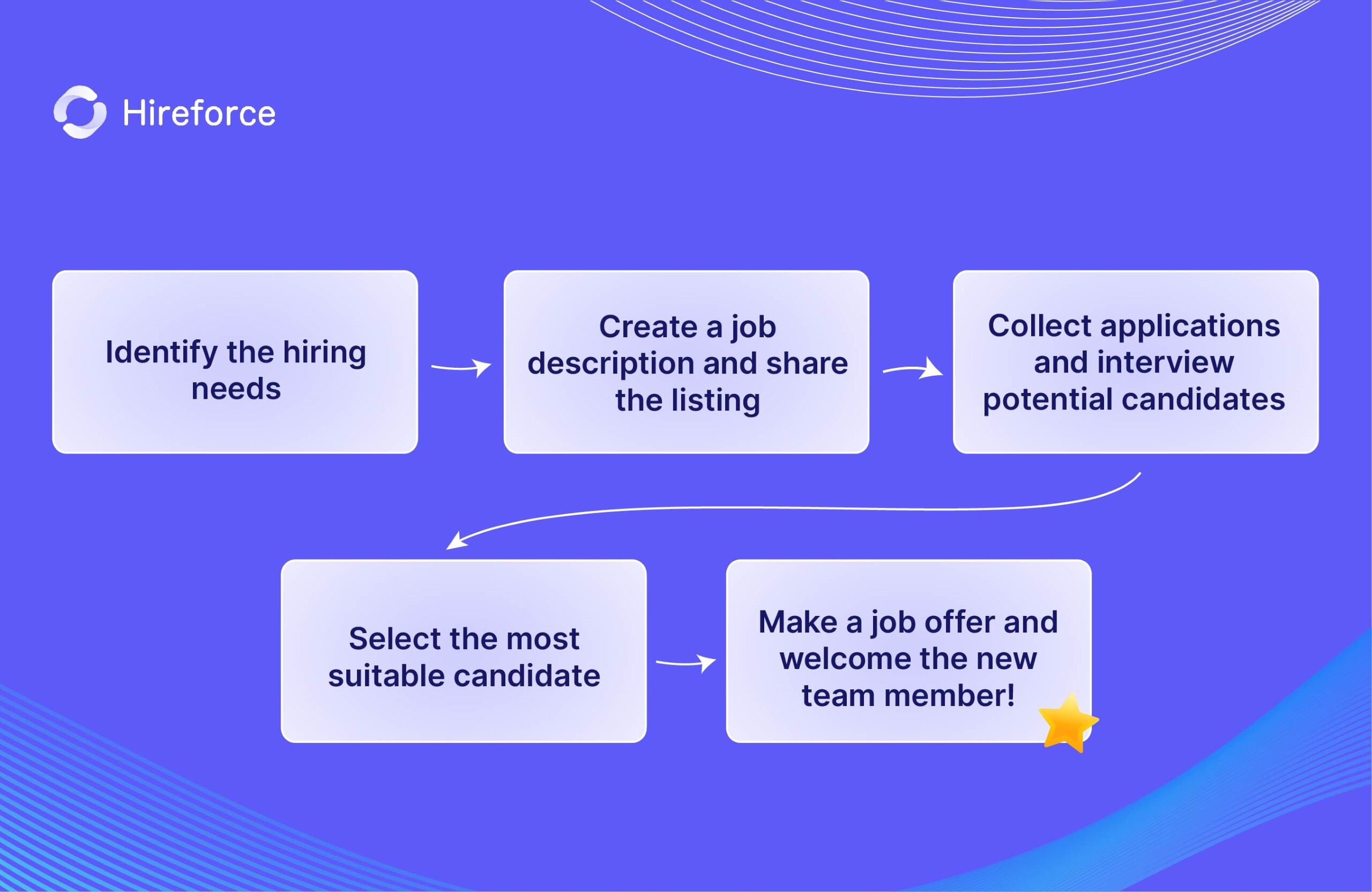A well-defined recruitment process is not a luxury but a necessity. It enables organizations to streamline hiring process of their own, ensuring that they are in the best position to draw in top-tier candidates.
What is a Recruitment Process?
A recruitment process is a comprehensive strategy or series of steps aimed at identifying, attracting, screening, and hiring the most suitable candidates for your organization. This process includes everything from defining job positions and creating comprehensive job descriptions to effectively onboarding new team members.
The process can vary significantly depending on the size of your company and your business model. However, certain core elements remain fundamental.
Step 1: Identify the Missing Link
Before you even think about crafting a job description, take a step back and analyze your team's current capabilities. What skills are lacking? What kind of personality would thrive in your company culture? What are the long-term goals for this role? Don't just fill a vacancy, identify the missing link that will propel your team forward.
Step 2: Paint a Crystal-Clear Picture
A well-written job description is your first impression - make it count. Clearly articulate the role's responsibilities, required skills, and qualifications. Go beyond the typical bullet points and infuse your company's personality into the description. Remember, you're not just looking for a candidate, you're looking for someone who aligns with your company's values and vision.
Step 3: Cast a Wide Net
The digital age offers a plethora of platforms to attract candidates. LinkedIn, specialized job boards, social media groups - each platform attracts a unique talent pool. Carefully consider where your ideal candidates are most likely to be found and tailor your approach accordingly.
Step 4: The Screening Game
Prepare for an influx of applications! This is where an Applicant Tracking System (ATS) like Hireforce can become your secret weapon, streamlining the process and helping you stay organized. Set clear criteria for screening resumes, focusing on skills, experience, and cultural fit. Remember, a well-structured ATS can automate much of this process, saving you valuable time and effort.
Step 5: Beyond the Resume
The first interview is your chance to delve deeper into a candidate's experience and assess their communication skills and personality. Prepare thoughtful questions that go beyond the resume, encouraging candidates to elaborate on their accomplishments and demonstrate their passion for the role.
Step 6: Skills Assessments
Want to see your candidates in action? Skills assessments provide valuable insights into their practical abilities. Tailor these assessments to the specific requirements of the role, whether it's coding challenges, writing samples, or problem-solving exercises.
Step 7: The Final Assessment
The second interview is your opportunity to dive deeper into a candidate's qualifications and assess their cultural fit within your team. Involve key stakeholders in this stage to gain a well-rounded perspective and ensure the chosen candidate aligns with the team's dynamics.
Step 8: The Moment of Truth
After careful consideration, it's time to make a decision. Review interview notes, assess skills assessments, and trust your instincts. Remember, the right candidate will not only possess the required skills but also seamlessly integrate into your company culture.
Step 9: Sealing the Deal
Once you've identified the ideal candidate, extend a competitive offer that reflects their experience and the value they bring to your company. Clearly outline salary, benefits, and any other relevant details to ensure a smooth transition into their new role.
Step 10: Welcome Aboard!
First impressions matter. Create a comprehensive onboarding process that welcomes your new hire and provides them with the tools and resources they need to succeed. A well-structured onboarding program sets the stage for long-term engagement and productivity.
Step 11: Continuous Improvement
Regular check-ins and performance reviews are essential for fostering growth and development within your team. These feedback sessions provide valuable insights into employee satisfaction, identify areas for improvement, and ensure everyone is aligned with company goals.
Creating the Recruitment Process Flowchart
Visualizing your recruitment workflow can be highly beneficial. Start by identifying the key steps and discussing them with management. Arrange these steps in a logical order and map them visually. Include decision-making points and document the process for future reference. Consider highlighting the process on your company website to provide insight for potential candidates.

Conclusion
A clear, organized recruitment process is integral to any successful organization. Using a structured flowchart can greatly improve efficiency and effectiveness. However, it's also important to regularly review and improve hiring process. As your organization evolves, so too should your recruitment workflow, adapting to fit different job positions and meet evolving business needs.
About Hireforce Applicant Tracking System
Hireforce is the next recruitment software designed with simplicity, flexibility, and collaboration in mind. We equip excellent teams with robust tools to manage candidates effectively, encourage teamwork, and simplify decision-making for a better, optimal hiring experience.
Ready to level up your hiring? We're currently in beta and offering a limited-time offer of 6 months FREE with full features and dedicated support. Sign up now and experience the future of recruitment!




